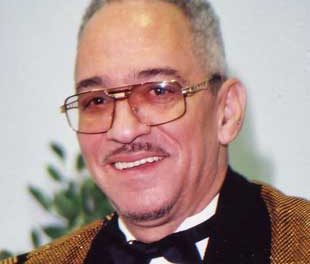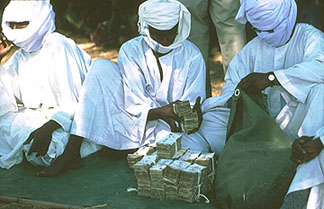
In this article, we intend to introduce Kurtz works and how he has researched on some of the pertinent questions in the debate of “Gay Rights”.
Let us summarize a few of his answers with links to the full text.
1. Why Can’t Monogamous Heterosexual Marriage and Homosexual Marriage Coexist?
No. Allowing Homosexual Marriage is a Death Knell of Hetrosexual Monogamous Marriages
In The End of Marriage in Scandinavia: The "conservative case" for same-sex marriage collapses (Weekly Standard February 02, 2004) Kurtz writes:
Kurtz continues: In 1989, a couple of years after Sweden broke ground by offering gay couples the first domestic partnership package in Europe, Denmark legalized de facto gay marriage. This kicked off a debate in Norway (traditionally more conservative than either Sweden or Denmark), which legalized de facto gay marriage in 1993. (Sweden expanded its benefits packages into de facto gay marriage in 1994.) In liberal Denmark, where out-of-wedlock birthrates were already very high, the public favored same-sex marriage. But in Norway, where the out-of-wedlock birthrate was lower–and religion traditionally stronger–gay marriage was imposed, against the public will, by the political elite.
As a result marriage is dying out in Scandinavia:
Kurtz observes: A majority of children in Sweden and Norway are born out of wedlock. Sixty percent of first-born children in Denmark have unmarried parents. Not coincidentally, these countries have had something close to full gay marriage for a decade or more. Same-sex marriage has locked in and reinforced an existing Scandinavian trend toward the separation of marriage and parenthood. The Nordic family pattern–including gay marriage–is spreading across Europe. And by looking closely at it we can answer the key empirical question underlying the gay marriage debate. Will same-sex marriage undermine the institution of marriage? It already has.
Full Text: http://www.weeklystandard.com/Content/Public/Articles/000/000/003/660zypwj.asp?pg=1
Conclusion 1: Homosexual Marriage Weakens the Heterosexual Marriage
2. “If homosexuals are given civil rights, then pedophiles would want them”: Is this not a fear mongering, slippery slope argument?
Not really. It is already happening. We will focus on the real slippery slope now:
Kurtz has researched and documented the already slippery slope. Well, the road ahead seems to be quite dangerous.
In Here comes the Brides: Plural marriage is waiting in the wings (Weekly Standard, December 26, 2005):
Kurtz notes: More broadly, the worldwide campaign for gay marriage seems to have stirred up an active bisexual movement in its wake. Bisexuals have traditionally been one of the least visible components of the GLBT (gay, lesbian, bisexual, transgendered) alliance. After a flurry of publicity in the 1970s, at the height of the sexual revolution, bisexuality faded from public view. Yet the 1990s brought new attention, with articles in Time and Newsweek touting the emergence of bisexuality as a distinctive and politically tinged identity (and linking bisexuality to nonmonogamous marriage). In recent years, websites, books, and academic studies devoted to bisexuality have proliferated, culminating in 2001 in the founding of one of the movement's key organs, the Journal of Bisexuality.
One of the first issues of the Journal of Bisexuality featured an account of a Dutch man's discovery of his own bisexuality. The story is presented as a model for public acceptance of bisexuality, the twist being that the narrative doubles as a political brief for polyamory. Married with two children, Koen Brand declared his bisexuality in 1999, at the height of the gay marriage debate in the Netherlands. Brand then joined the Dutch National Network for Bisexuality and took part in movement activities. Brand also met another married bisexual man. While both men remained married, the two wives agreed to allow their husbands to establish a public and steady sexual relationship. Friends, family, and coworkers also accepted the arrangement. So the two marriages were thus effectively merged into a larger entity, with the men serving as pivots in two overlapping polyamorous V's.
(Full Text: http://www.weeklystandard.com/Content/Public/Articles/000/000/006/494pqobc.asp?pg=1)
Conclusion 2: Homosexual Marriage Will Pave Way for All Kinds of Sexual Relationship
3. Is it not an Inequality to Deny the ‘right to marry” to Homosexuals?
In the next series, we will show the researches done on the benefits of monogamous heterosexual marriages. We will restrict ourselves to Kurtz research now. Kurtz has argued that principle of equality does not work in homosexual ‘marriages’.
In Going Dutch? : Lessons of the same-sex marriage debate in the Netherlands (Weekly Standard, May 31, 2004):
Kurtz notes: The equality principle applies only to those who are similarly situated. If procreation is essentially related to marriage, and even the possibility of procreation is "structurally missing" in same-sex couples, then heterosexual and homosexual couples are differently situated, and the equality principle does not apply.
Kurtz further shows that even allowing homosexual ‘marriages’ has a negative impact on child bearing.
Kurtz continues: Only a few year ago, two prominent demographers hailed the Dutch family as a model for Europe. Somehow the Dutch had managed to combine liberal family law and a robust welfare state with a surprisingly traditional attitude toward marriage. Even as a new pattern of highly unstable parental cohabitation was sweeping out of Scandinavia and across northern Europe, the Dutch were unswayed. To be sure, premarital cohabitation was widespread, but when Dutch couples decided to have children, they got married. At least they used to.
Today, marriage is in trouble in the Netherlands. In the mid-1990s, out-of-wedlock births, already rising, began a steeper increase, nearly doubling to 31 percent of births in 2003. These were the very years when the debate over the legal recognition of gay relationships came to the fore in the Netherlands, culminating in the legalization of full same-sex marriage in 2000. The conjunction is no coincidence.
Full Text: http://www.weeklystandard.com/Content/Public/Articles/000/000/002/938xpsxy.asp?pg=1
Conclusion 3: Heterosexual Marriages and Homosexual ‘Marriages’ are Not Equal as Procreation is Structurally Missing in Homosexual Marriages. Legitimizing Homosexual Marriages Has a Negative Impact on Child Bearing.
Further Reading of Stanley Kurtz Works:
1. Polygamy Versus Democracy: You can't have both http://www.weeklystandard.com/Content/Public/Articles/000/000/012/266jhfgd.asp
2. Articles & Publications by Stanley Kurtz in http://www.hudson.org/learn/index.cfm?fuseaction=staff_bio&eid=KurtStan
3. Zombie Killers: A.K.A., “Queering the Social” http://article.nationalreview.com/?q=MTU4NDEzNTY5ODNmOWU4M2Y1MGIwMTcyODdjZGQxOTk=
Disclaimer: While we encourage all to read Stanley Kurtz articles, we do not subscribe to all his views. As a matter of fact, except the Holy Bible, we consider no writings as infallible.
{moscomment}




